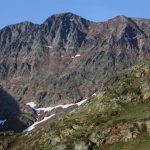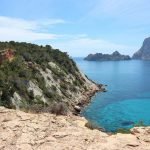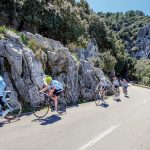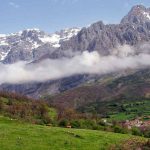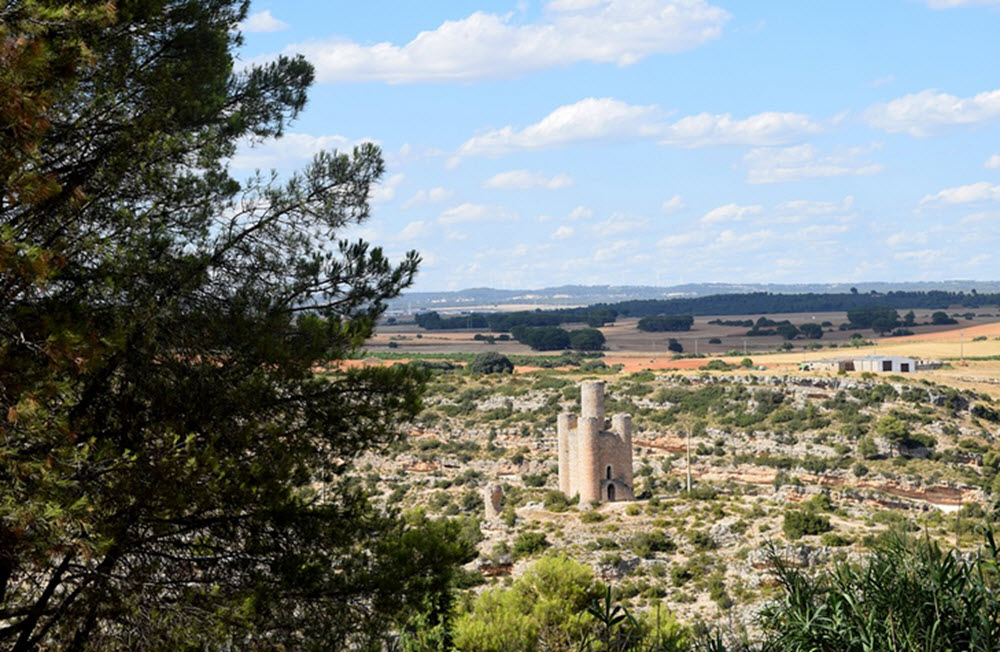In the Hoof-prints of El Cid – horseback across Castile
“Dust, sweat and steel,” goes a famous Spanish poem, “El Cid rides out across the terrible Castilian steppe.”
Much of the truth about Spain’s most celebrated Christian warrior has long been buried under swashbuckling legends but historians have managed, more or less, to establish the ‘Camino del Destierro’ (the Path to Exile), which took El Cid from his Castilian homelands to ‘glory’ as a mercenary in Moorish Zaragoza.
While Spain’s north-western region of Castilla y León is unlikely to strike most modern-day visitors as ‘terrible,’ it is still a wild land, full of wind-swept plains and brutal hills that are dotted here and there with rough-and-ready farming hamlets and fortress-like monasteries. Six hundred years after the last skirmishes between the local Moors and Christians this still feels like frontier territory. Horseback is the perfect way to immerse yourself in what is often called the heartland of modern Spain. For the next week we would be following in the hoof-prints of El Cid and pitting ourselves against the Castilian steppe.
“For a horseman this is the ultimate Spanish Marlboro Country,” says local guide, José Manuel Barreñada, who has probably ridden more of the region than anyone alive.
Within three hours of a pickup at Madrid airport we were already choosing our horses at José Manuel’s stable in the ancient market-town of Covarrubias. While El Cid actually began his ride from the court in Burgos, José Manuel was adamant that Covarrubias is the perfect starting point for his tour. This wonderful tangle of cobbled streets and handsome plazas is known as ‘the cradle of Castile’ and still looks much as it would have done when El Cid and his twelve faithful followers passed through in 1081. As José Manuel explained: “We have a medieval fiesta here every year. It’s really very simple: all you have to do is dress up, throw some straw around and let a few chickens and donkeys loose in the plaza. Apart from the telephone lines the ghost of El Cid could come trotting through at any moment and not notice the difference.”
Our first day’s ‘warm-up ride’ was a deliberately gentle one, though with several river crossings and a couple of canters that allowed us to get acquainted with our mounts. José Manuel claims to have horses to suit all abilities but, without exception, they are perfect combinations of what the Spanish call sangre y doma (breeding and control).
It was a perfect summer morning and the rising sun was beginning to burnish the rich Castilian stonework when we set off in earnest in the hoof-prints of El Cid. At the front of our column rode José Manuel – hand-on-hip to strike a pose of what he laughingly calls chulería (horseman-like cockiness). Following him was Odu, a veteran rider from Germany, Renske (a Dutch señorita) and Peter (from Hampton Court). José Manuel’s assistant Jesús rode rearguard and, as a show-jump riding instructor and ex-race jockey, would prove to be a welcome source of technical advice. My companions were all confident horsemen who rode at least once a week and left their families behind to pursue their hobby through one long-distance ride each year. I, however, was feeling rather less cause for chulería; the thought of covering fifteen miles a day for six consecutive days had me cursing the fact that my ‘anatomical upholstery’ had softened up so much during the course of fourteen months out of the saddle.
The poplars were shimmering in just a hint of breeze as we crossed the humpback bridge outside Covarrubias and turned along the wooded valley of the Río Arlanza. Our hooves raised perfumed clouds of rosemary and thyme. As we trotted through an orchard, where the first of the region’s million kilos of cherries were beginning to ripen, a deer broke from cover and bounded ahead of us. Higher up the valley we stopped to watch a plough-horse working an old vineyard – a sight that is all but extinct in modern Spain.
We by-passed stone flogging-posts that had once acted as deterrents to wayward vagabonds like ourselves and rode under the shade of the ramshackle houses to water our horses at village fountains. In one abandoned hamlet the clatter of our hooves on the cobbles was answered only by the staccato clack-clack-clack of a pair of storks, calling from their nest on a crumbling church tower.
While much of our route would follow the one taken by El Cid, José Manuel is more enthusiastic that his award-winning tour is an insight into ‘the roots of Castile’ rather than a pedantic historical pilgrimage.
Nevertheless, as we passed through the wooded hills of Sabinares del Arlanza, the last of the world’s great juniper forests (with trees that were already a thousand years old when El Cid passed through), José Manuel filled me in on the truth about the ‘local hero.’
Despite the detailed account that has been handed down, from an anonymous medieval eyewitness, in the form of The Song of My Cid, much about the real life of the most famous of Spanish knights has been a matter of dispute for historians. Popular tradition has it that the ‘treacherous’ King Alfonso VI wronged his ‘faithful vassal’ and out of sheer vindictiveness banished him from his beloved Castile. But most experts now believe that when El Cid was forced to give up what amounted to his lucrative medieval protection racket, the great Christian warrior had few scruples about going to earn a living in the services of the Moorish ruler of Zaragoza.
It is possible, though unlikely, that El Cid and his merry men stopped to water their horses in the very same sunny meadow that we did, but what is fairly certain is that they were not greeted with the sight of a laid table and a thick stew bubbling on an open fire. In response to a quiet buzz from José Manuel’s mobile the support vehicle had arrived right on schedule and Jorge (backup driver, chef, waiter and, as we later discovered, expert masseur) was waiting to ladle out generous rations of olla podrida. The literal translation – ‘putrid pot’ – does no justice whatsoever to this wonderful Castilian stew that combines bacon, loin, chorizo, black-pudding, ham and beans in a rich sauce.
Castilian tinto and fiery licor de hierbas (herb liqueur) went a long way towards fuelling a wonderfully reckless afternoon’s gallop across the hills to Silos.
We arrived in Santo Domingo de Silos with just enough time to leave our horses at the stables and rush into the monastery for evening mass. Normally a round of G&Ts; in the hotel bar would have been given higher priority but we had all been looking forward to mass at Silos. Although the monks of Santo Domingo monastery have long been revered throughout Spain they hit their peak of international fame in the mid-nineties when their Gregorian Chants made the pop charts.
An hour of spiritual sustenance was followed by two more earthly ones during which we did our best to demolish a wonderful Spanish lechazo (roast suckling kid) in the low-beamed dining room of Silos’s old stage-coach inn. Soft beds and hot baths eased the last few aches out of bodies that were fast moulding themselves to days in the saddle.
Doing our best to rise to what we took to be the ‘challenges’ of a modern-day Castilian saddle-tramp, we slipped into a gentle routine that would be continued throughout the trek. After a leisurely breakfast we rode for about four hours before we rendezvoused with Jorge for lunch. In the heat of the early afternoon we dedicated an hour or so to the great Spanish tradition of the siesta and lie around some meadow or riverbank, chewing grass-stalks in attitudes of rural abandon.
On our third afternoon we trotted into the village of Navas del Pinar. This isolated sheep-farming community is not the sort that has much need for a hotel so José Manuel had rented an empty house and had arranged for a seemingly endless procession of tapas (cured ham, chorizo, Manchego cheese, roast peppers, garlic mushrooms, and even lamb chops) to be trooped in through the front door.
On day four our path separated from the one that El Cid had taken. Fearing ambush from King Alfonso’s troops, it would have been foolish for the ‘fugitive’ to risk a ride up the narrow gorge of Río Lobos Canyon. But this is certainly one of Spain’s most spectacular landscapes and José Manuel had promised us that the detour would be a highlight of the trip.
“When the countryside is so spectacular that all you can do is stare and gasp,” he points out, “nobody ever thinks to ask ‘but did El Cid really ride through here?’”
The river was so clear that it seemed to shatter as we splashed through, following a trail that wound through flowery glades and shadowy pines where the soil had been rooted by wild boar. African hoopoes and flycatchers swooped past us and gemlike kingfishers dived into crystal-clear ponds that were deep enough to swallow our horses and us with them. As our horses carried us deeper into the canyon we craned our necks to gaze at the vultures that wheeled above us and the fledglings that flexed their wings in the cave-pocked walls.
We toasted ‘Wolf River Canyon’ that evening at the luxurious Cabaña Real hotel in Casarejos and put in an unusually early night in preparation for the next day’s long ride up the pine-forested flanks of the Sierra de Neila to the town of Quintanar de la Sierra. From there it took just a few hours to ride onto the plateau where we cantered (with varying degrees of chulería) to the source of the Río Arlanza.
El Cid would have had many more tough days of ‘dust, sweat and steel’ before he reached the plunder and loot of the east but to us the exile’s life seemed to have undeniable attractions. Despite the aching upholstery I was sorry that the journey had come to an end.
Notes:
– This article appeared originally in www.worldwisewanderer.com, a collection of travel articles from around the world. Reproduced with the author’s permision.
– ‘The Camino del Cid’ tour (see www.equitour.com) won the overall prize for active tourism at Madrid’s huge FITUR travel fair in 2004.

